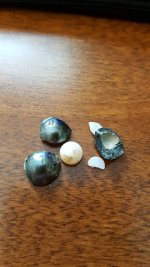MMtwo
Well-known member
- Joined
- Jan 14, 2016
- Messages
- 326
Hi PG folks. Does anyone have a high-quality picture of an Akoya pearl showing the interior bead? I would like to use the picture on the Facebook page.
I do not have a stray akoya at my house, or I would perform a hammer test.
Thanks in advance.
I do not have a stray akoya at my house, or I would perform a hammer test.
Thanks in advance.


